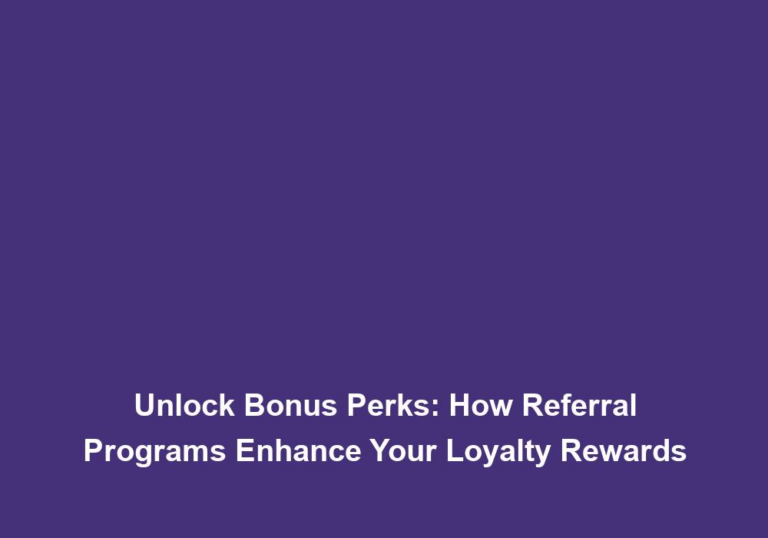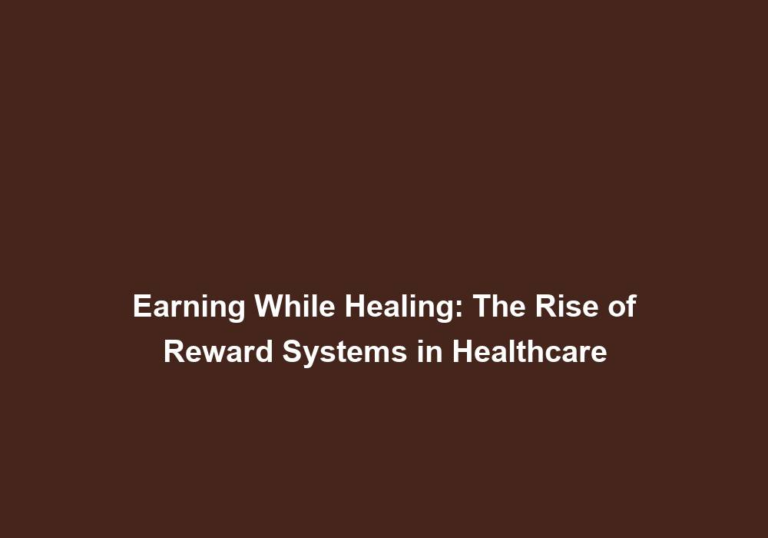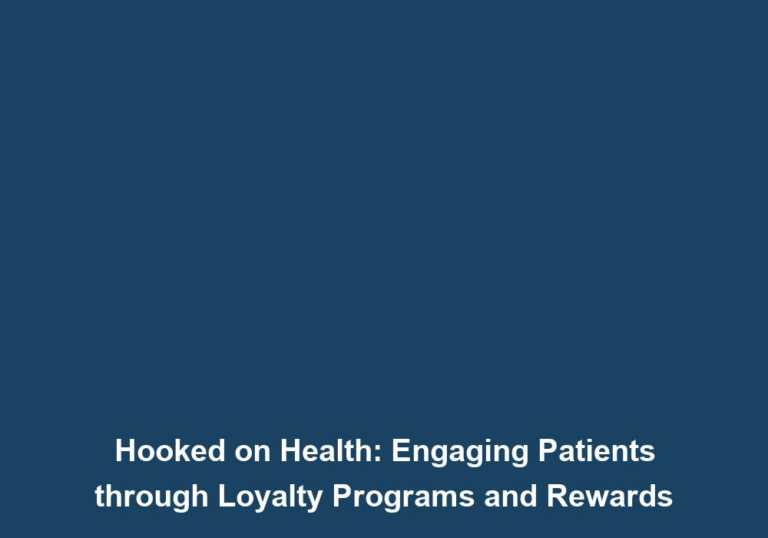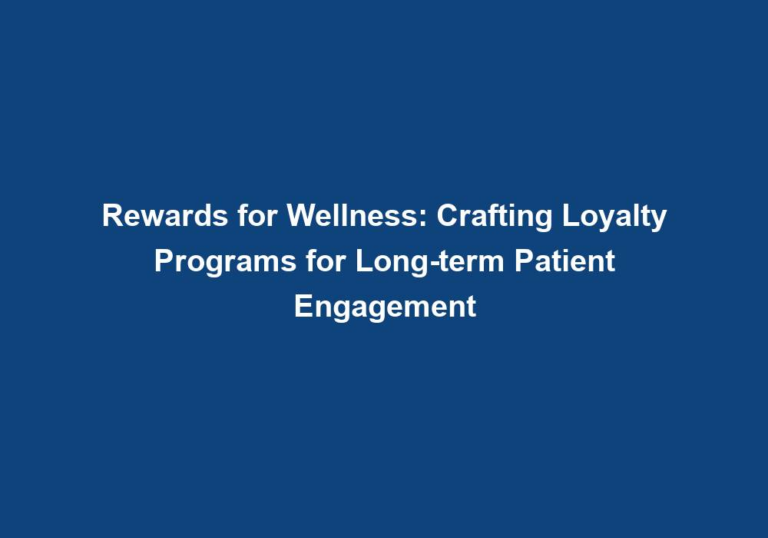From Check-ups to Check-ins: Maximizing Point-based Loyalty Programs for Patients
In recent years, point-based loyalty programs have gained popularity across various industries, including healthcare. These programs offer an effective way for healthcare providers to engage and retain patients while rewarding them for their loyalty. By implementing and maximizing point-based loyalty programs, healthcare providers can not only enhance patient satisfaction but also drive patient loyalty and ultimately improve the overall patient experience.
What are Point-based Loyalty Programs?
Point-based loyalty programs are designed to incentivize and reward customers for their repeat business, encouraging them to stay loyal to a particular brand or service provider. In the healthcare industry, these loyalty programs can be tailored to meet the unique needs of patients.
In the context of healthcare, point-based loyalty programs can offer patients rewards, discounts, or other benefits based on their engagement and utilization of healthcare services. Patients can earn points by attending check-ups, adhering to treatment plans, participating in preventive health programs, sharing their experiences, or even referring other patients. These points can then be redeemed for discounts on future medical services, wellness products, or other healthcare-related perks.
Benefits of Point-based Loyalty Programs for Patients
-
Enhanced Patient Engagement: Point-based loyalty programs encourage patients to actively participate in their own healthcare journey. By offering incentives, patients are motivated to attend regular check-ups, adhere to treatment plans, and take preventive measures. This increased engagement can lead to better health outcomes and improved patient satisfaction.
-
Personalized Healthcare Experience: Loyalty programs provide healthcare providers with valuable data about their patients’ preferences, behaviors, and needs. This data can be used to personalize the patient experience, ensuring that patients receive tailored recommendations, targeted health promotions, and relevant wellness resources.
-
Financial Incentives: Patients can enjoy monetary benefits through point-based loyalty programs. By earning points and redeeming them for discounts or rewards, patients can save on healthcare expenses, making treatment more affordable and accessible. Additionally, these financial incentives can encourage patients to seek necessary care and adhere to prescribed treatments, ultimately improving their overall health.
-
Reinforcement of Positive Behaviors: Point-based loyalty programs serve as a reminder for patients to maintain healthy behaviors and adhere to prescribed treatments. By rewarding positive actions, such as attending regular check-ups or completing preventive health programs, patients are motivated to continue their health journeys and make informed choices. This reinforcement of positive behaviors can lead to long-term health improvements and better patient outcomes.
Maximizing Point-based Loyalty Programs for Patients
To maximize the effectiveness of point-based loyalty programs for patients, healthcare providers should consider the following strategies:
1. Clear Communication and Education
Ensure that patients are well-informed about the loyalty program, its benefits, and how they can participate. Communication materials should be easily understandable, transparent, and accessible to all patients. Clearly explain how patients can earn points, track their progress, and redeem their rewards. Provide educational resources that outline the importance of regular check-ups, adherence to treatment plans, and engagement in preventive health measures.
2. Tailored Rewards
Offer a variety of rewards that are relevant and appealing to patients. Consider offering discounts on future medical services, wellness products, gym memberships, or even non-healthcare related rewards such as gift cards. By tailoring rewards to individual preferences, patients are more likely to engage with the program and feel valued. Conduct surveys or gather feedback to understand patients’ preferences and interests, and adjust the rewards accordingly.
3. Gamification and Challenges
Incorporate gamification elements into the loyalty program to increase patient engagement and motivation. Create challenges and milestones that patients can strive to achieve, such as completing a certain number of check-ups in a year or reaching specific health goals. Celebrate and reward patients for their achievements, fostering a sense of accomplishment and continuous improvement. Consider implementing leaderboards or progress tracking systems to further enhance the gamified experience.
4. Seamless Integration with Digital Platforms
Ensure that the loyalty program is seamlessly integrated into existing patient portals or mobile applications. This integration allows patients to easily track their points, access personalized recommendations, and redeem rewards. By leveraging digital platforms, healthcare providers can enhance the overall patient experience and provide a user-friendly interface for patients to engage with the loyalty program. Consider utilizing push notifications or email reminders to keep patients informed about their progress and upcoming rewards.
5. Regular Evaluation and Improvement
Continuously evaluate the performance of the loyalty program, gather patient feedback, and make necessary improvements. Monitor engagement levels, redemption rates, and patient satisfaction to identify areas of improvement. Regularly update the rewards and incentives to keep the program fresh and exciting for patients. Consider conducting surveys or focus groups to gather feedback directly from patients and use this information to refine the program. By continuously evaluating and improving the loyalty program, healthcare providers can ensure its long-term success and effectiveness.
Conclusion
Point-based loyalty programs have the potential to revolutionize patient engagement and satisfaction in the healthcare industry. By implementing and maximizing these programs, healthcare providers can create a personalized healthcare experience, drive patient loyalty, and ultimately improve patient outcomes. By effectively communicating the benefits, tailoring rewards, gamifying the experience, integrating digital platforms, and continuously evaluating and improving, healthcare providers can unlock the full potential of point-based loyalty programs for the benefit of their patients and their own organizations.







